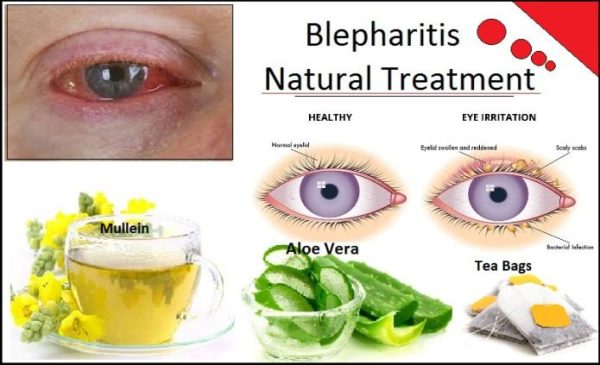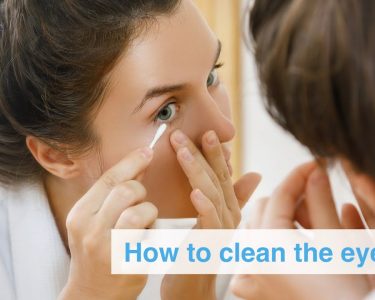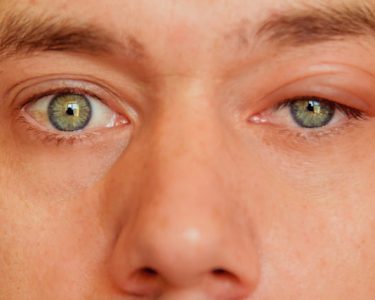Blepharitis
Blepharitis is a condition which occurs when the eyelids become inflamed, irritated, and itchy. It can occur due to several factors like medications such as antibiotics and steroids; allergies; infection in the eye sockets; blocked tear ducts; dry or moist eyes; poor circulation in the area around your eyes because of some other disease etc.
Blepharitis is a condition which occurs when the eyelids become inflamed, irritated, and itchy. It can be caused by a number of things like allergies, Eyelid Infection Blepharitis (such as conjunctivitis or trichiasis) and even hormonal changes in women.
Blepharitis has been found to be more common in people with certain health conditions such as glaucoma or diabetes mellitus type II. It can also occur if you have an underlying disease that causes inflammation of your skin around your eyes (such as psoriasis). This means that blepharitis may not always be symptomatic of something else going on with your body but rather just happen because of other issues that aren’t related directly to your eyesight itself!
Causes of Blepharitis
The causes of blepharitis are bacteria, viruses, allergies and fungi.
- Bacterial: This can be caused by an infection that was acquired from the environment or another person (like dust mites). It can also happen if you have a weak immune system.
- Viral: Some people get viral blepharitis due to herpes simplex virus (HSV), which is responsible for cold sores on the mouth; chicken pox; Epstein-Barr virus (EBV) in people who have immunodeficiency diseases; influenza A and B viruses in those with chronic lung disease; hepatitis C infection; hepatitis D infection; human papillomavirus (HPV) among others.[1]
You may also have allergies that cause inflammation around your eyes.[2] If you’re allergic to something like pollen then there will be swelling and redness around your eyelids as well as inside them.”
Symptoms of Blepharitis
Blepharitis is a common skin condition that can be caused by a number of factors. Itchy eyes, redness and sensitivity to light are all symptoms of blepharitis. If you experience any of these signs or symptoms, it’s important to see your doctor so they can determine which cause is at play and treat accordingly.
- Redness around the eyelids: You may notice that your eyelids are red or inflamed (erythematous) for no reason at all—but this could be an early sign of blepharitis since there’s no other explanation for the redness!
- Discharge from the eyes: Blepharitis causes inflammation in the upper part of your eyelid called Staphylococcus aureus bacteria causing discharge from both sides of your eyes (uncommon). This discharge will usually clear up on its own within two weeks but if left untreated can lead to permanent damage if left untreated long enough..
Home Remedies for Blepharitis
The following home remedies are effective for treating blepharitis:
- Tea tree oil (tamanu): This essential oil has been used in many cultures for centuries. It can be applied to the eyelids, as well as washed off with warm water and a cotton ball after applying it on the eyes. You should keep this remedy away from your eye area until you’re done using it because of its strong aroma, which may make you sneeze if not diluted enough.
- Fennel seeds: This herb has anti-inflammatory properties that help relieve symptoms of disease quickly by reducing swelling and redness within 24 hours after use.[6] To apply fennel seed powder directly onto your face at night before bedtime, simply mix together equal parts powdered root vegetable and ground seeds into 1/4 cup warm water before soaking overnight.[7] In addition to being soothing, fennel also boasts anti-bacterial properties that help prevent infection from spreading throughout your body.[8]
1. Tea Tree Oil for Treating Blepharitis
Tea tree oil is an anti-inflammatory, antiseptic and antibacterial agent that can be used to treat blepharitis. It also has antiviral properties that help prevent the spread of infection from one area to another in your skin (or even worse, from another body part).
2. Fennel Seeds for Treating Blepharitis
Fennel seeds are a good source of vitamin C, vitamin K, and manganese. They can help to reduce inflammation and fight bacteria that cause blepharitis by reducing redness in the eyes. Fennel may also be used as an antiseptic agent to treat adult acne or other inflammatory skin conditions like eczema or psoriasis.
3. Use Coconut Oil to Cure Blepharitis
Coconut oil is a natural antibacterial and antifungal, which means it can help treat blepharitis. Coconut oil also has anti-inflammatory properties that make it great for treating blepharitis. It can be used as a moisturizer for dry skin and as a massage oil to reduce inflammation in the eyes and face.
Coconut oil comes from coconuts, which are actually fruits! You may have heard about them before, because they’re incredibly good for you—they contain lots of healthy fats that keep your body functioning properly! The best part about coconut oil? It’s affordable! You can buy small bottles at most grocery stores or even online (I recommend Amazon).
4. Coriander for Treating Blepharitis
Coriander seeds can be used to treat this. They are effective in treating this condition because they have anti-inflammatory properties and help get rid of excess mucus from your eyes.
You should use coriander seed powder twice a day, before going to bed and before waking up. Make sure that you place the powder on your lower eyelids first, then massage it gently into your eyeball for about 30 seconds. Repeat this process once every day for four weeks until you notice improvement in your condition
5. Get Rid of Blepharitis with Aloe Vera Gel
Aloe vera gel is another natural remedy for blepharitis. This herb has been used for centuries to treat inflammation and other skin conditions, including dry eyes and corneal ulcers. It’s also believed to have antiseptic properties that can help cure blepharitis as well!
You can apply aloe vera directly to your Red Eyelids Treatment by using a cotton ball or eye pad soaked in the gel (make sure it doesn’t touch your eyes). You can also mix some aloe into moisturizer before applying it on the skin around your eyes. The combination of these two ingredients will help keep bacteria at bay while healing damaged tissues faster than ever before possible
6. Turmeric for Treating Blepharitis
Turmeric is an anti-inflammatory agent, which helps in reducing redness and irritation. It also acts as a mouthwash to cure blepharitis by killing bacteria on the skin surface. Turmeric can be mixed with water or honey to make a paste that can be applied on your eyes for 15 minutes once daily for effective treatment of blepharitis.
To make this remedy at home, take one teaspoon of turmeric powder, add two tablespoons of warm water together and mix properly until it becomes smooth paste like consistency. Apply this mixture on both eyes twice daily till you get relief from itching sensation associated with this infection!
7. Warm Compress to Cure Blepharitis Naturally at Home
To make a warm compress, you need:
- A clean towel or cloth.
- First, wet the cloth with warm water and wring it out to remove any excess liquid. The consistency should be like that of a thin paste (not too thick).2. Then apply this warm compress onto your eyelids for 10 minutes at least three times per day until your symptoms ease up completely! You can also try it on other parts of your face too if there’s no improvement after applying this method consistently over time.”
You can treat blephertitis with home remedies.
You can Herbal Treatment for Blepharitis with home remedies. Blepharitis is an inflammation of the eyelids and can be caused by bacteria or allergies.
Some of the home remedies that are effective in treating blepharitis include:
- Tea tree oil – Apply some tea tree oil to your eyelids and leave it on overnight. The next morning, wash away with warm water and pat dry gently before applying a cool compress for 15 minutes to help prevent any further irritation from occurring.
- Fennel seeds – Add 2 teaspoons fennel seeds into a cup of boiling water for 10 minutes then strain out the pulp so you end up with just about 1 tablespoon worth left over that’s ready for use!
- Coconut oil – Coconut oil has antibacterial qualities which makes it great at preventing future infections from occurring once they’ve already begun growing within us (like those living inside our eyes). To apply Eye Treatment for Blepharitis method simply warm up some coconut oil until liquid enough not to burn yourself but not too hot either; then apply directly onto both sides of each lid before letting sit around 20 minutes so everything gets nice ‘n’ slippery again!
Conclusion
So, if you are suffering from blepharitis and looking for a quick solution to your problem then these home remedies might be just what you need. You can try them out yourself and see how they work on your condition.




